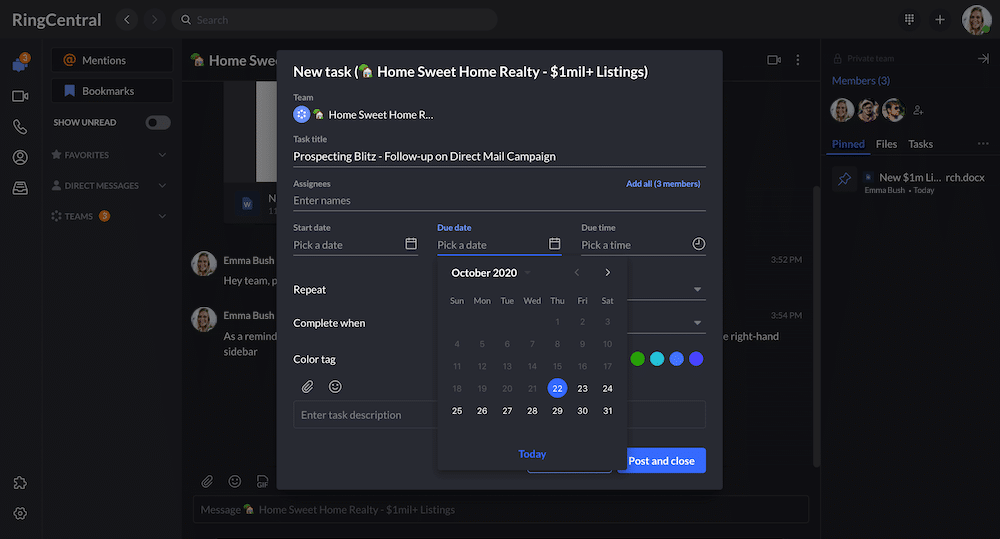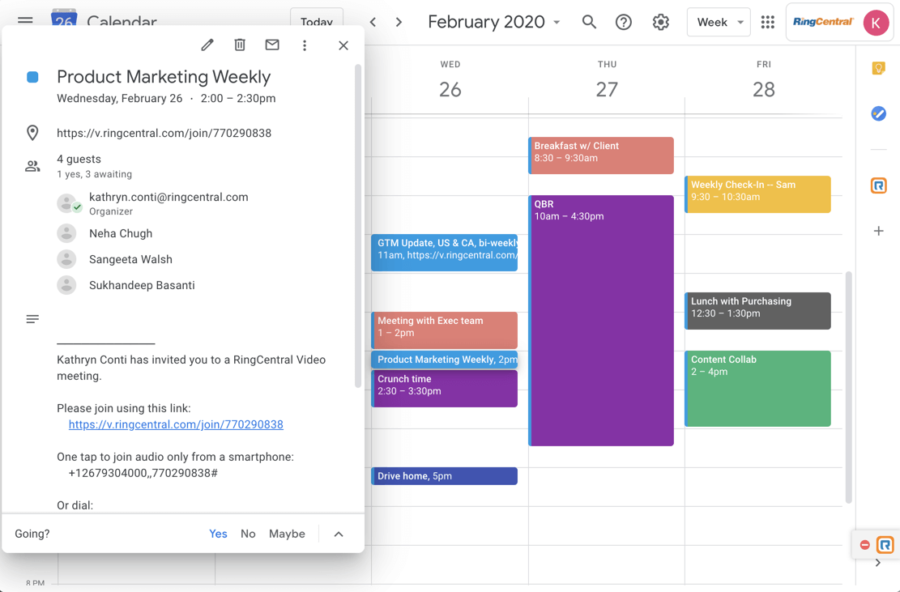It’s not the most comfortable thing to do in the world, but performance management is an essential part of every business.
Why?
Because effective performance reviews will not only empower your employees to improve their skills, but also motivate them to knock their goals out of the park.
(Conversely, ineffective performance reviews can leave employees floundering, confused about team and company goals, and ultimately drive them away from your business.)
But here’s the thing: 77% of HR executives believe performance reviews don’t accurately reflect employee performance. Not only that, a whopping 95% of employees aren’t satisfied with their company’s review process.
Could it be that managers simply aren’t prepared to carry out comprehensive performance reviews—leading to miscommunication, employee dissatisfaction, and unaddressed poor performance? Possibly.
But there’s also the fact that a global shift towards remote work and distributed teams means an increasing number of managers, directors, and business owners will have to transform the way they conduct performance reviews going forward.
This means replacing in-person meetings with video meetings, phone calls, and other communication channels that let you have the kind of real-time communication that’s fundamental to effective performance reviews.
So, the question remains: how can company managers and business leaders carry out comprehensive performance management that leads to employee and company growth?
That’s what we’ll look at in this article. Skip ahead if you’d like to one of these following sections:
- Covering the basics: What exactly is a performance review?
- Why is a performance review process important?
- Performance management for distributed teams
- 5 tips for effective employee assessment
⭐️Free employee review template⭐️
We’ve done the hard work for you—build awesome reviews today for in-person, remote, and hybrid teams.
What is a performance review?
A performance review is essentially a structured assessment in which a manager or key stakeholder assesses an employee’s performance at work. You may also hear a performance review referred to as a performance evaluation or a performance appraisal.
Its purpose is to provide a way for you to identify an employee’s strengths and weaknesses, provide feedback, and help them to set goals for the future.
In the past, it was common for businesses to conduct annual performance reviews for all employees. However, an increasing number of companies are shifting towards a system that provides employees with constructive feedback on a more regular basis.
Today, employers will often organize monthly or weekly check-ins with employees as a more casual approach that emphasizes a company culture of constant feedback and improvement.
In today’s remote work-culture, communications solutions make this style of performance review pretty simple, with integrated phone, video, messaging, and other collaboration features like task management and file sharing.
One example of these tools is RingCentral’s desktop and mobile app—here’s a quick look at how an “anywhere workspace” like this works:
With more and more distributed and hybrid teams, having a tool or app like this can help managers bridge the in-office communications gap and stay connected to all of their team members, no matter where they are.
Why is a performance review process important?
When done right, a performance management system has many benefits for both employees and managers.
After an effective performance review, employees will understand:
- What they’re doing right and where their strengths lie
- Areas of improvement
- Their specific job duties and how their work contributes to and aligns with wider business goals
A performance evaluation facilitates a setting where an employee can ask questions, raise concerns, or provide feedback to their manager or employer. This contributes to an open and honest environment and encourages better workplace communication. Moreover, the performance review aims at motivating employees to enhance their skills and set career development objectives.
For team managers, performance management can be equally as enlightening and beneficial. Performance reviews enable business leaders to:
- Communicate expectations and hold employees accountable for their responsibilities.
- Address issues before they escalate and become costly to the business.
- Recognize high-performing employees and reward them accordingly; this also provides staff members with an incentive to do well in the future.
- Foster employee engagement and teamwork, leading to better performance and growth.
Annual performance reviews or continuous feedback?
Traditional annual performance management systems are typically focused on analyzing past performance and identifying top-down goals and metrics for future direction. Usually, this type of employee review is led by human resources leaders, and feedback is limited to manager ratings. While this may still work for some business models, it’s not for everyone.
Modern, forward-thinking businesses are increasingly adopting a continuous feedback philosophy when it comes to performance management.
A continuous feedback approach is more likely to focus on future growth and development. It involves frequent follow-up reviews based on multi-rater feedback. Regular individual performance feedback throughout the year allows business leaders to maximize employee potential with shared goals and performance improvement plans.
Performance management for distributed teams
Remote performance management can be challenging. Asynchronous communication, different time zones, and a lack of company culture make it difficult to track and review employee performance.
A unified communications as a service (UCaaS) platform makes staying in touch easy, whether your employees are temporarily distributed or your business has shifted to remote work permanently.
For example, with the RingCentral app, your team gets a plethora of different communication channels in one place. They can message each other, participate in video meetings, and even manage tasks from their mobile devices:

Are you considering transforming your performance review process this year?
Let’s look at five tips to help you carry out effective employee assessment and take your team to the next level.
🕹️ Get a hands-on look at how RingCentral works by booking a product tour:
💰 You can also use this calculator to see roughly how much your business could save by using RingCentral to support your team’s communication with each other, clients, freelancers, and more.
5 tips for more effective employee assessment
1. Have a face-to-face conversation
Communicate performance ratings face-to-face. With more and more people turning to remote work out of necessity or preference, in-person meetings aren’t always possible for many businesses.
Speaking to someone one-on-one in real time is key to effective communication. There are plenty of scenarios where a video meeting is better than a phone call, and conducting a performance appraisal is definitely one of them.
If you can, set up an HD video chat to have the conversation face-to-face. This approach prevents miscommunication and allows for discussion and feedback to take place.
Some video conferencing platforms, like the RingCentral app, seamlessly integrates with both Microsoft Outlook and Google Calendar to make sure you never miss a meeting—the meeting link even gets generated automatically in the invite for you:
2. Be prepared
Performance management can be a daunting task, and it pays to be prepared. Here are a few ways to stay organized before, during, and after a review:
- Take notes
- Share files or documents with your employee so they can follow along with you in a performance rubric or outline
- Create tasks for your employee (and yourself!) to keep everyone accountable after the performance review
Fun fact: You can do all three of these things in the RingCentral app (which also has video conferencing, messaging, and phone calling built in, if you remember). You can open up a note—and save it right in a conversation with your employee:

And upload files to a team chat…

Ideally, your employees should have access to assessment criteria and requirements so they can reference these whenever they need to. Here are some tools and practices you can follow to make sure your performance appraisals run smoothly.
Use a performance review template
Employee assessment can be a daunting task, particularly when carried out just once a year. Using a performance review template can help you to carry out productive two-way conversations and mitigate the issues of employees feeling scrutinized.
Templates provide you with an idea of key measurable metrics and indicators to use in your review. These can always be adapted to your particular needs.
Performance review phrases and questions
Read through some key performance assessment phrases and questions to help you articulate your feedback to direct reports. You must provide feedback using clear and positive language to ensure the review is goal-focused and productive. Be specific, and ensure your feedback provides solutions and next steps to help the employee grow.
Send out a self-assessment
Before their next performance review, send out a self-assessment form. Self-evaluation forms provide employees with an opportunity to reflect on their strengths, weaknesses, and overall performance.
They also reveal how the employee sees themselves as part of the team and highlights any discrepancies in your leadership skills. Armed with these employee insights, you can head into the performance review knowing how to approach and motivate the employee.
Consider 360-degree feedback
360-degree feedback refers to the process of collecting and implementing feedback from managers, peers, junior staff members, and often customer feedback, too. Self-assessment is also part of this process, which results in a complete overview of an employee’s strengths, weaknesses, and improvement opportunities.
3. Provide employees with regular constructive feedback
Regardless of whether you hold official performance reviews once or twice a year, feedback shouldn’t be limited to these occasions. It’s important that you provide employees with regular feedback throughout the year.
This involves keeping track of team members’ performance so that you have an accurate and fair understanding of their overall performance. Having regular communication with employees builds a more open and honest work environment. Plus, this provides you with an opportunity to recognize issues, address them, and prevent future mistakes or bad behavior from occurring.
Don’t just focus on negative feedback though. Focusing too heavily on an employee’s weaknesses can cause their performance to decline by 27%.
That’s not to say that you can’t provide critique when they’re missing the mark. This is the hard thing about being a manager—you have to be able to help your team understand where they can improve, without completely shattering their ego.
Obviously, everyone has a different management style and you might have even had a manager who didn’t care at all about “feelings.” Which could be fine! Different employees respond differently to positive and negative critique—your job as a manager is to figure out which one will help you get the most out of your employees.
Hey, no one said this job was easy.
And to throw another fun challenge into this situation, there’s the whole remote work scenario. Providing consistent feedback can be especially challenging among dispersed or remote teams! When you’re part of a distributed team, you can’t sit in a room with someone and read their body language and subtle shifts in tone and behavior during a performance review.
That’s why it’s so important to have an integrated communications platform. Nothing will truly replace that feeling of being in the same physical space as someone—but you can get pretty darn close. If you can have HD video conferencing, team messaging, and voice calls, that will give you options for communicating with your team members.
And you may end up finding that some teammates respond better anyway on video, while others who are more introverted might prefer messaging instead.
4. Honesty is the best policy
We’ve all told a little white lie at some point. In some situations, honesty might not be the best policy. When it comes to performance reviews, it is.
If you know an employee isn’t performing as well as they should, don’t tiptoe around the subject. Be upfront and honest, and help them to come up with an improvement plan.
In the same way, recognize their strengths and acknowledge them. When managers can name their strengths, 71% of employees feel more engaged and energized by their work.
Holding regular check-ins can help you to build an open and honest relationship with employees.
Set up a weekly or biweekly video chat, phone call, or simply message your team to stay connected. Regular communication is key to breaking down ego barriers and fostering an environment where employees are comfortable receiving feedback—even if some of it is negative.
5. Set the right goals
Employee goals are a key outcome of performance evaluations. Effective goals should be SMART (Specific, Measurable, Attainable, Relevant, and Time Based). Moreover, they should be tracked and updated regularly. Once you’ve set goals with the employee, you should organize regular meetings to check-in and offer support where needed.
RingCentral Video is a handy tool for virtual team managers to meet with employees face-to-face. Simply by being able to see the emotion on your face, employees will feel more comfortable talking about their goals, progress, and any challenges they’ve come up against. Regular communication prevents employee burnout and improves motivation.
No matter which performance management methodology you implement in your business, an effective performance review should motivate employees, boost engagement, and facilitate continual development in the workplace.

Make sure your performance reviews help both staff and your business
Performance reviews aren’t a box ticking exercise. Get them right and they foster trust, employee engagement, and—ultimately—improved business performance. To make sure you get the most out of reviews, you must be honest, set the right goals, and always shoot for constructive feedback.
In this age of distributed teams, too, having the right communication solutions is also key to performance reviews. With a platform like RingCentral Office, you can still perform reviews face-to-face, and ensure that both you and your employees can communicate clearly and easily.
Originally published Jan 15, 2021, updated Jan 30, 2023









